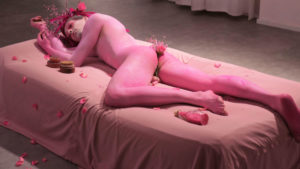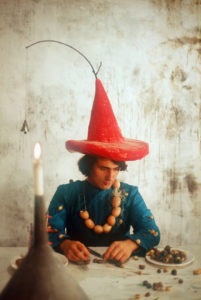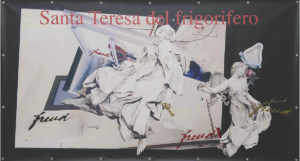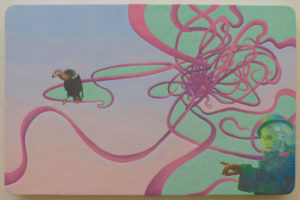It is no longer the time for a heated debate on the confrontation – as well as on a potential osmosis – between the “dominant cultures” and those once called “subordinate”. This is a debate once analyzed by Gramsci, then taken up by Carlo Ginzburg in his seminal texts, which needs to be overcome. However, after the musical and literary binge of the seventies, here is a question dear to a certain fringe of artists: at the present time, is a spurious repêchage of the so-called folk/pop culture valid in order to establish a fruitful link with our contemporary sensitivity?
Whereas in a hazy distant past there was a strict distinction between the culture of the ruling classes and the material, pagan, agrarian culture, as early as in the Renaissance times enlightened figures such as Rabelais and Bruegel – easy examples – have shown that it is not always a one-way path from top to bottom, and that the account of giving and having is not so obvious (illuminating, in this regard, are the pages of L’Antirinascimento – the “Anti-Renaissance” – by the art historian Eugenio Battisti). In the same way, we can say that life on Mars exists today, a life beyond the international style that seems to dominate the world of contemporary art. A sort of supranational racism attempting to pursue a diet that excludes what is different from us, which excludes eros, colour, and everything that appears capable of expressing itself without the use of exhausting taglines. Taglines are indispensable to support the user but, in the worst-case scenario, they just end up illustrating the most laughable of the gimmicks.
It is less conventional, therefore, to advocate for a miscellaneous antidote in order to contrast Brazilian Arte Povera, aboriginal Minimalism, and Methodist Conceptualism. This antidote should be cyclically taken from the maze of ethnology and from the core of folklore, be it sacred or profane, which has not yet completely thwarted by tourism. Just think, for example, of the Islamic Matisse, of Picasso’s African heart of darkness, of Pasolini’s Trilogy of life, and, just to bring a present-day example, to the phantasmagorical totems of Aj Fosik.
Of course, syncretic artists, who work consistently with cultural mélanges, are also present. However, those artists capable of cultivating similar “subversive pleasures”, similar folklore-sensitive vocations (which are necessarily at least partially characterized by figuration, rather than by abstraction) are regarded as a sort of art gypsies. These artists are avoided and kept at a safe distance, alas, from the architect Loos, according to whom “the ornament is a crime”. Strange but true, still today, everything related to folklore and ornamentation is hailed as something negligible in the ‘winged fields’ of art.
Nonetheless, a few significant exceptions exist. The exhibition What a Wonderful World, curated by Pierluca Nardoni and Claudio Franzoni, currently on show at the Magnani Foundation in Reggio Emilia, analyses without prejudices the theme of ornamentation from an anthropological point of view. Another example is the essay The Ghost of the Decorative by the art critic Giuliana Altea.
For this reason, in a moment in which the present becomes past incredibly quickly, it is better to focus on something layered over time that deserves to some extent to be put under the spotlight again (worst case scenario, it will be just another ‘archaic revival’, as Terence McKenna would say). And this something can and should be the quintessence of folklore, a folklore able to reaffirm “the mythology of men with a past”, to pass down a tradition that is also a “betrayal” as the anthropologist Marino Niola says (TN: ‘tradition’ and ‘betrayal’ have the same etymological root in Italian). Indeed, it is only through betrayal – not through respectful identity philology – that the mythical and folkloric tradition can take revenge and hope to claim a role. Also, it is only through betrayal – or, who knows, through a sort of “archaeological futurism” or alternatively, an “archaeology of the future” – that folklore can hope to have a say in our contemporaneity.
The works-testimonies exhibited are of manifold origins: these include the perturbing eros of Vettor Pisani, the performative research of the young Armenia, but also the playful dimension of Felice Levini and the repertoire of those who have written and worked on eroticized bucrania. Taking into consideration other areas of the country, similar patterns can be observed for the decorations – halfway between the sacred and the agrarian profane – that adorn the spring carts and oxen (traccas) during the celebrations in honour of Sant’Efisio in Cagliari. Last but not least, how can we not think of the video clips by the Australian band Dead Can Dance that revisit Bulgarian folklore, or, in Italy, of the Canzoni della Cupa by Vinicio Capossela?
Bruno Benuzzi
(English version by Tobia Dall’Osto)
Info:
L’eresia del folklore
Artworks by: Armenia, Bruno Benuzzi, Felice Levini, Vettor Pisani
MLN GLR
Palazzo Gnudi
via Riva Reno 77
Bologna
info: cariello13@gmail.com
 Armenia, Sebastiane Vattienti, 2020, performance, ph Lucia Adele Nanni
Armenia, Sebastiane Vattienti, 2020, performance, ph Lucia Adele Nanni
 Bruno Benuzzi, Rabelaisiana, 1975, teatro-performance
Bruno Benuzzi, Rabelaisiana, 1975, teatro-performance
 Vettor Pisani, Santa Teresa del frigorifero, 2004, ph courtesy Studio Vigato
Vettor Pisani, Santa Teresa del frigorifero, 2004, ph courtesy Studio Vigato
 Bruno Benuzzi, Posatoio digitale eco Parsi, 2018, tecnica mista su legno, cm 82 x 125, ph courtesy Millenium Gallery
Bruno Benuzzi, Posatoio digitale eco Parsi, 2018, tecnica mista su legno, cm 82 x 125, ph courtesy Millenium Gallery

is a contemporary art magazine since 1980






NO COMMENT